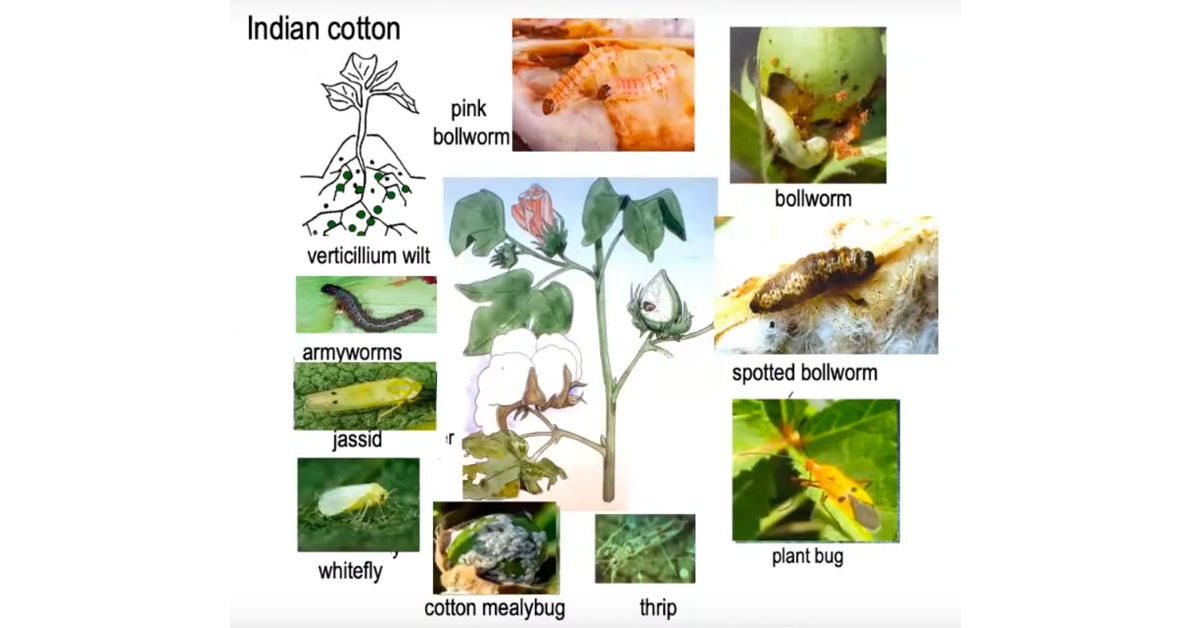
Researchers find GM Bt cotton leads to stagnant yields, high costs, increased insecticide use, low farmer incomes and farmer suicides
The conclusion of this study on GM Bt cotton in India speaks for itself: "The hybrid long-season Bt technology for rainfed and irrigated cotton is unique to India, and is a value capture mechanism. This technology is suboptimal, leading to stagnant yields, high input costs, increased insecticide use, and low farmer incomes that increase economic distress that is a proximate cause of cotton farmer suicides. The current GM Bt technology adds costs in rainfed cotton without commensurate increases in yield. Non-GM pure-line high-density short-season varieties could double rainfed cotton yield, reduce costs, decrease insecticide use, and help ameliorate suicides. The GM hybrid technology is inappropriate for incorporation in short-season high-density varieties."
---
Bio-economics of Indian hybrid Bt cotton and farmer suicides
Andrew Paul Gutierrez, Luigi Ponti, Keshav R. Kranthi, Johann Baumgärtner, Peter. E. Kenmore, Gianni Gilioli, Antonio Boggia, Jose Ricardo Cure & Daniel Rodríguez
Environmental Sciences Europe volume 32, Article number: 139 (2020)
https://enveurope.springeropen.com/articles/10.1186/s12302-020-00406-6
Abstract
Background
The implementation of hybrid Bt cotton unique to India has been heralded as a grand success by government agencies, seed companies and other proponents, and yet yields have stagnated at low levels and production costs have risen 2.5–3-fold. The low-yield hybrid cotton system of India contributes thousands of farmer suicides to the annual national toll. Conceptual and methodological barriers have hindered bioeconomic analysis of the ecological and social sustainability of such cross-scale agro-ecological problems in time and geographic space, under global technology and climate change. As a paradigm shift, we use conceptually simple, parameter-sparse, theoretically based, mechanistic, weather-driven physiologically based demographic models (PBDMs) to deconstruct the bio-economics of the Indian cotton system.
Results
Our analysis of Indian hybrid cotton system explains some extant ecological and economic problems, and suggests a viable solution. Specifically, the model accurately captured the age-stage mass dynamics of rainfed and irrigated cotton growth/development and the interactions with the key pest pink bollworm across five south-central Indian states, and enabled identification of proximate bioeconomic factors responsible for low yield and their relationship to farmer suicides. The results are reinforced by analysis of Ministry of Agriculture annual state-level data. We explain why short-season, high-density non-GM cotton is a highly viable solution for Indian cotton farmers in rainfed and irrigated cotton areas of the five states, and possibly nationally. The transition from a theoretical bioeconomic construct to a real-world regional bioeconomic analysis proved seamless.
Conclusions
The hybrid long-season Bt technology for rainfed and irrigated cotton is unique to India, and is a value capture mechanism. This technology is suboptimal leading to stagnant yields, high input costs, increased insecticide use, and low farmer incomes that increase economic distress that is a proximate cause of cotton farmer suicides. The current GM Bt technology adds costs in rainfed cotton without commensurate increases in yield. Non-GM pure-line high-density short-season varieties could double rainfed cotton yield, reduce costs, decrease insecticide use, and help ameliorate suicides. The GM hybrid technology is inappropriate for incorporation in short-season high-density varieties.









